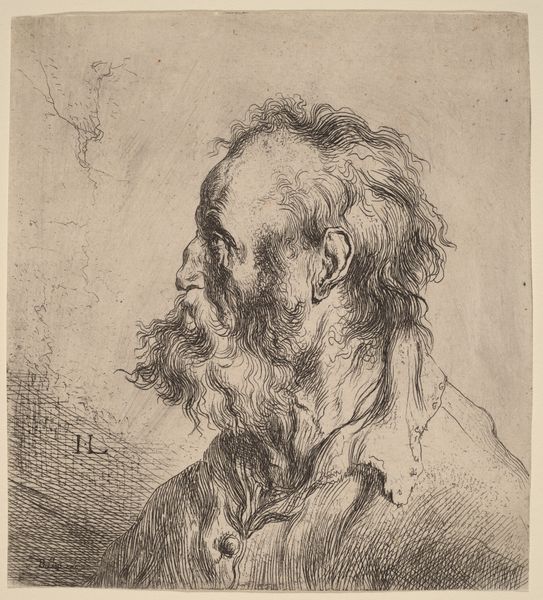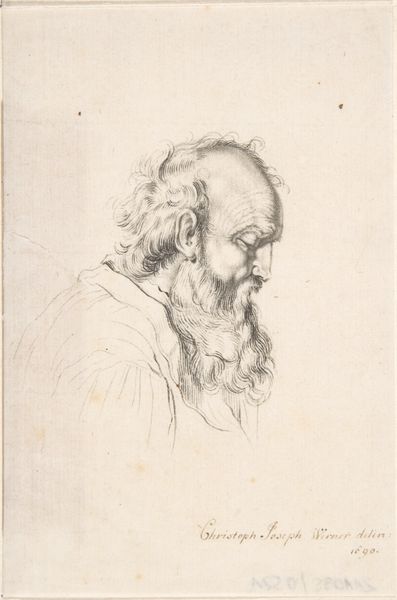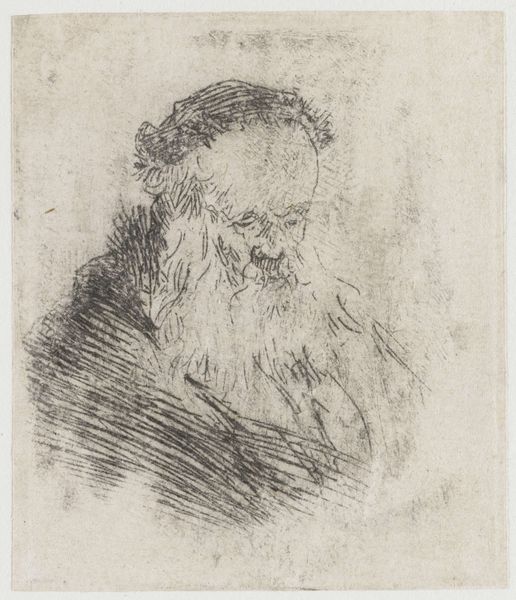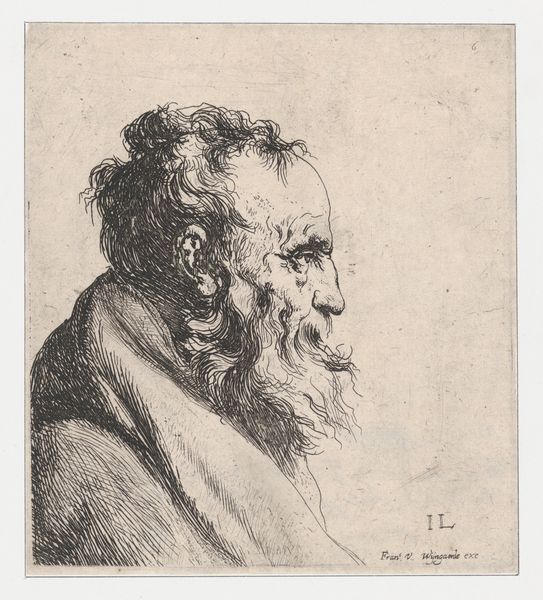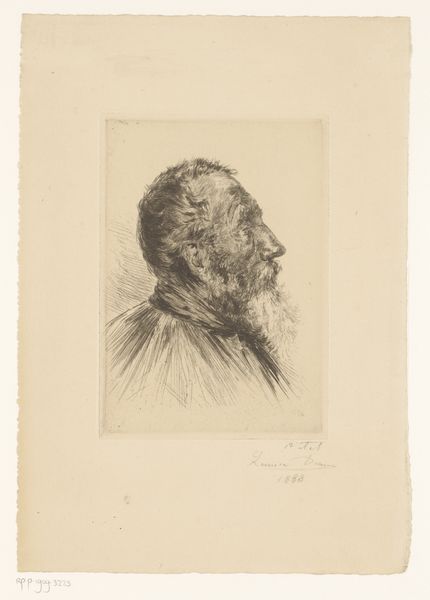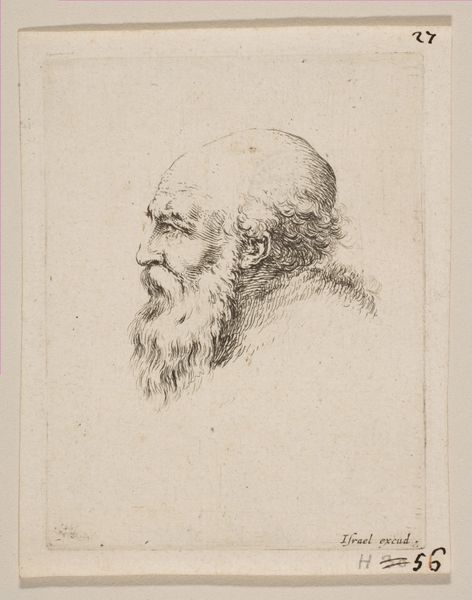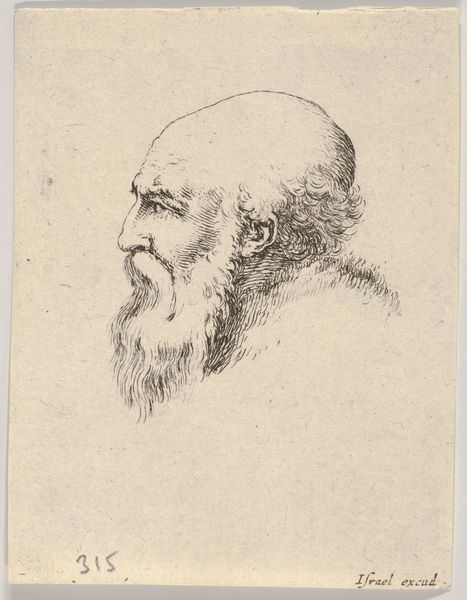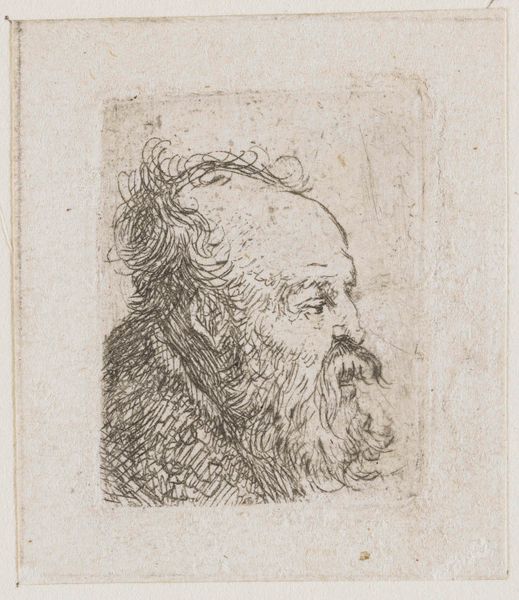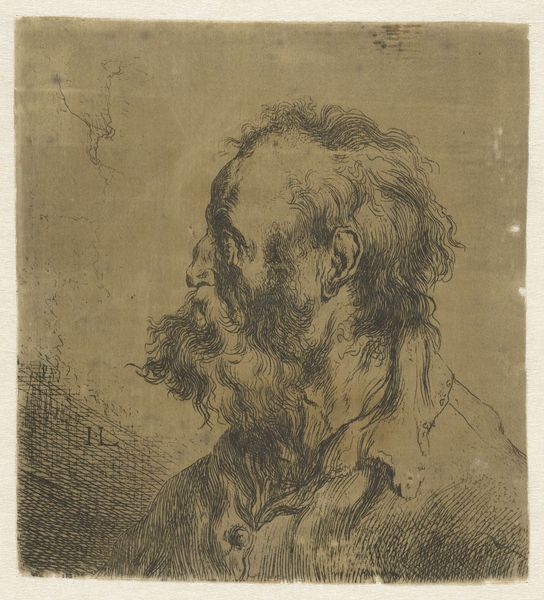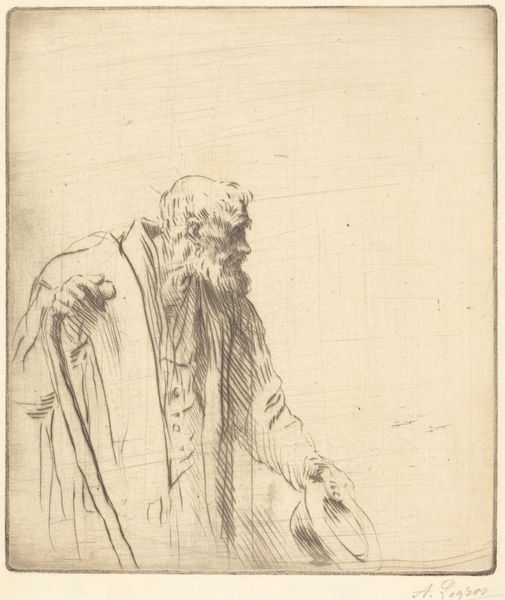
drawing, print, etching, ink, engraving
#
portrait
#
drawing
#
ink drawing
#
baroque
# print
#
etching
#
ink
#
engraving
Dimensions: 66 mm (height) x 57 mm (width) (plademaal)
Editor: This is Rembrandt van Rijn’s “Bald old man with a short beard, in profile right,” an etching from 1635. It's such a delicate image. I'm immediately struck by the contrast between the loosely sketched background and the incredibly detailed rendering of the man's face. How should we interpret the way Rembrandt chose to portray this man and, especially, what could he want to convey about ageing in the Dutch Golden Age? Curator: That's a wonderful question! Considering the historical context, portraiture in 17th-century Netherlands wasn't merely about capturing likeness. It was about conveying social status, moral character, and individual achievement. Notice the sitter's garment, probably a "tabbaard". Such "tabbaards", an informal housecoat worn in the home and in artists’ studios, lent dignity and scholarly ethos to the subject, so the purpose was clearly to study a particular personality, which was important within the public and commercial artistic system in Amsterdam at that time. So the goal was to capture the interiority, a reflection on mortality and wisdom through age. Editor: That’s insightful! I hadn't considered the significance of the garment. Is it possible that Rembrandt also challenged societal views on age by choosing an “ordinary” man, instead of, say, a regal or affluent character? Curator: Absolutely. Rembrandt was fascinated by the everyday. He elevated the mundane to a level of artistic and social significance, perhaps democratising the visual landscape by placing value on those often overlooked in grand history paintings. Editor: So, by focusing on this particular individual, and giving him such a presence through his mastery, Rembrandt might also have advocated for the recognition of wisdom found outside traditional power structures. Thank you for your clarifications! Curator: Precisely! And understanding the socio-political factors during the Dutch Golden Age allows us to appreciate the radical, often subtle ways artists could challenge prevailing norms and reflect on universal experiences like aging.
Comments
No comments
Be the first to comment and join the conversation on the ultimate creative platform.

